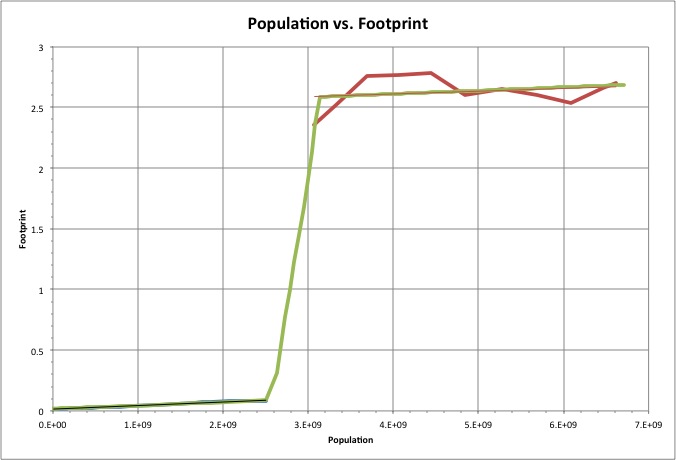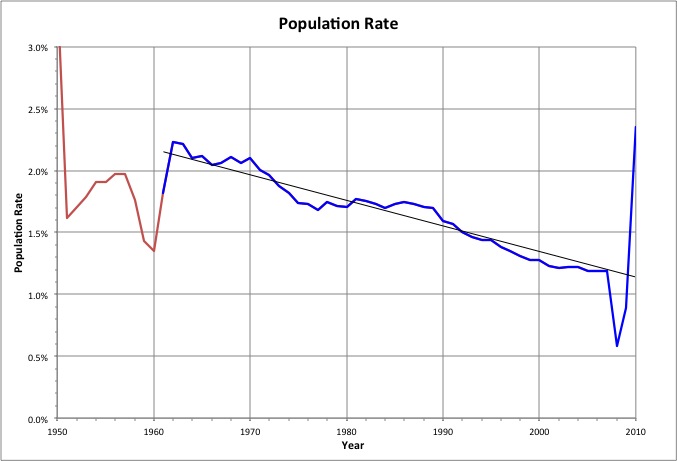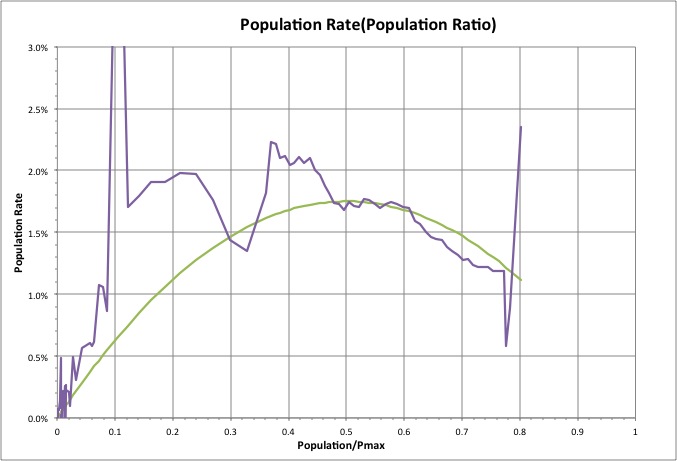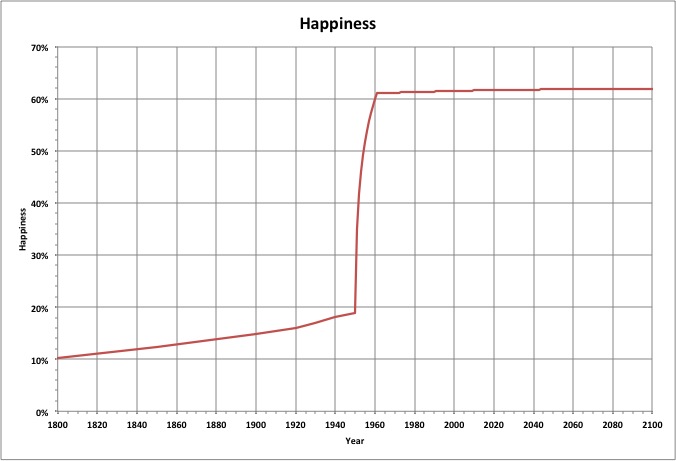
In the newest version of the Population-Consumption model, consumption and population are related according to a simple formula:
C = Mt * P2 / 2 + Me * P
Where C is consumption, P is population, Mt is transaction mass, and Me is extraction mass. See the blog post Discontinuity for more explanation.
The per-capita consumption, represented here by the ecological footprint F, is therefore:
F = Mt * P / 2 + Me
where:
Mt = 5.5E-11
Me = 1.80E-02 (P ≤ 2.64E+09)
Me = 2.50 (P ≥ 3.14E+09)

The rate of population change has declined linearly since the 1960s. If this trend were to continue, the rate would reach zero (the population would peak) in 2065 and consumption of ecological resources would be the equivalent of 2.1 Earths.

Looking at the larger picture, the population rate (Poprate) seems to follow the relationship
Ratemag * P / Pmax * (1 - P / Pmax)
where Ratemag is the maximum normal population rate (approximately 0.07 = 7%), and population Pmax is derived from the maximum consumption Cmax:
Cmax = Mt * Pmax2 / 2 + Me * Pmax
From the historical data, Cmax appears to have been one Earth (1.19E+10 hectares) until about 400 BC, and from then on it was two Earths (2.38E+10 hectares).

Assuming current conditions can be maintained (extraction mass Me stays at its current value – energy and other resources can support it; and the maximum consumption Cmax doesn't decrease), the population will approach the maximum (Pmax = 8.69E+09) and stay there.

Consumption likewise approaches its maximum.
This is currently envisioned to be the best case scenario, because there are good reasons to believe that the conditions cannot be maintained, primarily:
- Many of the non-renewable resources, such as oil, that are keeping Me high, are at or beyond their peak extraction rates and cannot continue to be consumed at their current levels.
- Cmax is fundamentally unsustainable; it is based on depletion of the ecological capital (other species, atmospheric composition) rather than what is produced with that capital (Cmax = 1 Earth).
For a discussion of these results, see the blog post Approaching the Peak.
